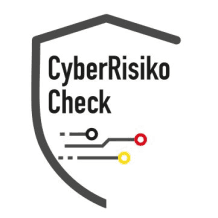Deepfake detection with the tongue? How does that work?

Share the blog with others
Deepfake Detection with the Tongue: How to Recognize Manipulations and Protect Yourself
Deepfakes are a current phenomenon in the digital world, making increasingly larger waves. Despite remarkable advances in deepfake technology, realistically representing certain facial features remains a challenge. One such detail that even advanced algorithms struggle to mimic is the tongue. In this article, we explain why the tongue is a valuable clue for deepfake detection and how you can use this knowledge to identify forgeries and protect yourself against manipulations.
Who Uses Deepfakes and Why Do They Pose a Threat?
Deepfakes have found their way into various fields – from the entertainment industry to social media and politics. Celebrities, politicians, and even companies are affected by the risks of potential forgeries. Deepfakes can undermine public trust in personalities and institutions, severely impacting their reputation and credibility. Particularly, companies and public figures face the challenge of safeguarding themselves against manipulated content to avoid potential harm. Secure your reputation before it's too late! Rely on deepfake detection and protect yourself against digital forgeries.
Interested in effective deepfake detection? Let our experts advise you and learn how you can safeguard yourself against digital manipulations.
What Makes the Tongue a Particularly Valuable Feature for Deepfake Detection?
Deepfake algorithms typically focus on the outer facial features like eyes, mouth, and general facial expressions, while the tongue often plays a secondary role. The complexity of the tongue, its rapid movement, and its varied use while speaking present a hurdle for the algorithms, as it is often inadequately captured in the training data. The consequence: In many deepfakes, the tongue appears unnatural or stiff, making it a valuable detection feature. If you encounter content where the tongue movements seem unusual or inconsistent, it may be a possible indication of manipulation.
Why Is Depicting the Tongue So Challenging for Deepfake Algorithms?
The tongue is a muscle that can bend and move in multiple directions and is constantly in motion when someone speaks. It reflects light in a special way and takes on different shapes and positions depending on the pronunciation and mouth posture. These movements and changing light conditions pose a challenge for deepfake algorithms, which struggle to accurately replicate these subtleties. Additionally, many deepfake training datasets lack high-quality videos that depict the tongue and its movements in detail, further complicating the representation. Hence, the tongue can often be used as a reliable feature to identify deepfakes.
When and Where Should the Tongue Be Used for Deepfake Detection?
The analysis of the tongue is particularly important for content that could negatively impact you or your company. A careful observation of tongue movements can provide valuable clues when the credibility of a person or organization is questioned. In social networks, where information spreads quickly and often unverified, it is advisable to critically assess content, especially when the tongue appears unusually stiff or unnatural. Detecting small details like irregular tongue movements can significantly help expose deepfakes early. Keep control over your online presence! Rely on precise deepfake detection and protect your digital image.
Utilize the Power of AI for Deepfake Analysis! Learn how our technologies can help you reliably verify content.
How Can You Recognize Deepfakes? Tips for Analyzing the Tongue
Observing the tongue can be a helpful technique for recognizing even deepfakes. Have everyone involved in the meeting stick out their tongues; typically, deepfake software should not be able to accurately reproduce a tongue.
These clues can be initial signs of deepfakes. However, for a detailed examination, it is advisable to rely on professional deepfake detection software. Interested in an in-depth analysis?
We offer tailored detection solutions for businesses and organizations. Contact us for a non-binding consultation!
What Technologies Are Available for Reliable Deepfake Detection?
Professional deepfake detection software will become an indispensable tool for media companies, organizations, and institutions that work with digital content daily. Using AI-supported analyses, the movements of facial features, including the tongue, are examined for consistency and realism. Algorithms are applied that simulate the subtleties of human movements and light reflections, capable of revealing irregularities. Many companies are already relying on such tools to verify content before publication and to avoid forgeries. Do you want to learn more about technological possibilities for deepfake detection? Contact us for a consultation and discover the best solutions for your company.
Conclusion: Use the Tongue for Deepfake Detection
The tongue is a surprisingly helpful detection feature for deepfakes, and analyzing its movement offers an accessible method for identifying forgeries. Particularly for individuals and organizations with high public interest and an intense online presence, ensuring the authenticity of their content is crucial. Utilizing detection tools and being aware of features like tongue analysis can help safeguard against manipulations.
Don't just rely on your first impression, but protect yourself and your brand with advanced technologies for deepfake detection. For more information and tailored solutions, we are at your service – contact us today!







